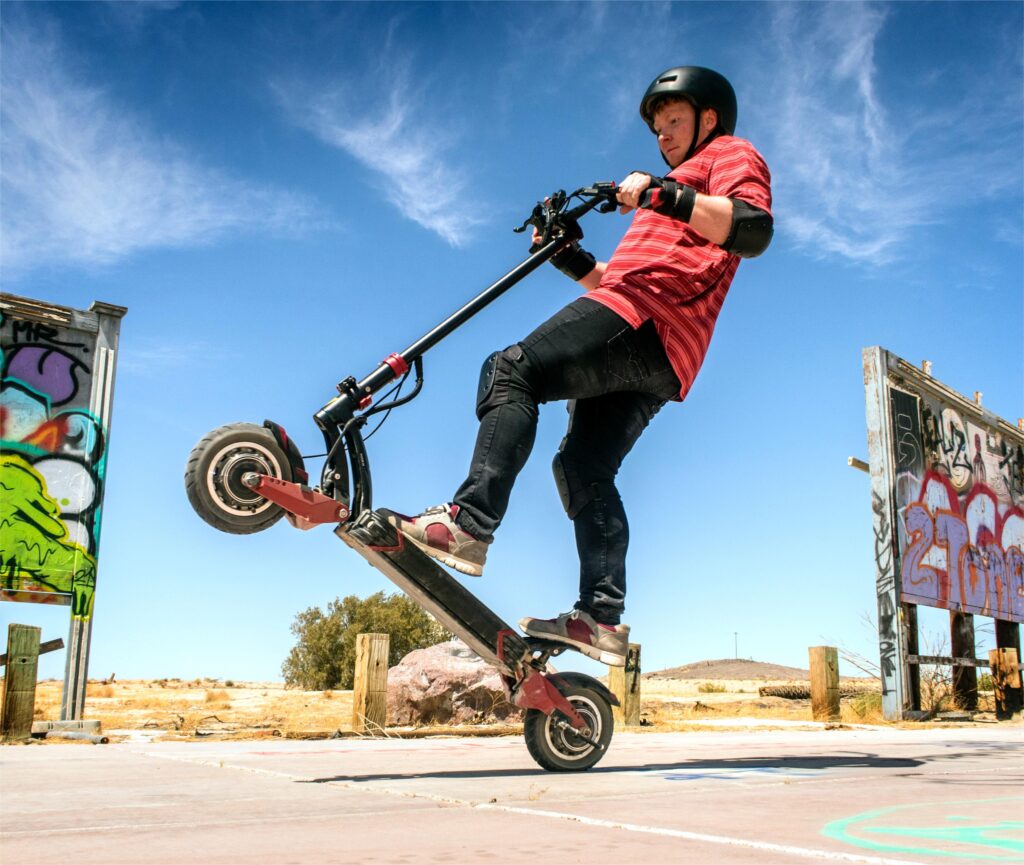Scooter helmet safety standard is getting more important due to the growing of the popularity of electrical scooter. The number of scooter accidents increased in the past neither. It is a cool and convenient way to ride a scooter to get around, however, it is quite important to keep us away from the accidents and safe. Wearing a scooter helmet is an essential way to reduce the risk of head injuries in the event of an accident.

Why You Should Wear a Helmet
A study by the National Highway Traffic Safety Administration (NHTSA) found that helmets are 37% effective in preventing fatalities and 67% effective in preventing brain injuries to scooter riders. According to the Centers for Disease Control and Prevention (CDC), wearing a helmet can reduce the risk of head injury by 70%.
These statistics demonstrate the significance of wearing a helmet while riding a scooter. Therefore, as a helmet manufacturer, we strongly suggest to wear a helmet while riding a scooter.
When you play as a helmet distributor, the scooter helmet safety standard is definitely a factor that you should have a deep understanding.


If you own stores or shops that sell helmets, we suggest that your staff can offer the following tips to your consumers.
Tips for Choosing the Right Helmet
1. The type of riding: Different helmets are designed for different types of riding. For example, a full-face helmet provides the most protection for adventure or extra-sports riding, while an open-face helmet is better suited for casual, city riding.
2. Proper fit: A helmet should fit snugly on the head, with the straps adjusted to fit the face and mouth. Make sure the helmet sit steadily while wearing it.
3. Ventilation and comfort: A well-ventilated helmet will help keep head cool and comfortable during riding. Look for helmets with more vents or holes that allow air to flow in and out.
4. Check the scooter helmet safety features: guide consumers to look for a helmet that meets local scooter helmet safety standards, such as CPSC 1203 in U.S. and Canada. The standard ensures that the helmet can withstand impact and penetration, and has a secure retention system.

When choosing a helmet, it’s important to look for one that meets scooter helmet safety standards.
Scooter Helmet safety standards are designed to ensure that helmets provide a certain level of protection for the wearer’s head and brain in the event of an impact or crash.
Here are some of the key points of scooter helmet safety standards:
1. Impact resistance: Helmet safety standards require that helmets be able to withstand a certain amount of impact force without cracking or breaking. This is typically tested by dropping a helmet from a specified height onto a hard surface.
2. Penetration resistance: In addition to impact resistance, helmet safety standards also require that helmets be able to resist penetration by objects that might come into contact with the helmet during a crash, such as tree branches or sharp rocks.
3. Retention system: Helmet safety standards require that helmets have a retention system, such as a chin strap, that can keep the helmet securely in place on the wearer’s head during an impact.
4. Fit: Helmet safety standards require that helmets fit properly on the wearer’s head and that they are comfortable to wear. A properly fitting helmet will stay in place on the head and provide the best protection in the event of a crash.
5. Visibility: Helmet safety standards often require that helmets have reflective or brightly colored strips or decals to increase visibility when riding in low light conditions.
6. Materials: Helmet safety standards specify the materials that can be used in the construction of helmets, such as plastics, metals, and composites. These materials must meet certain requirements for strength, durability, and impact resistance.
7. Testing: Helmet safety standards require that helmets be tested to ensure that they meet the required safety standards. Testing may include impact testing, penetration testing, and other types of testing to ensure that the helmet provides adequate protection.
8. Certification: Helmet safety standards often require that helmets be certified by a third-party testing organization, such as the Snell Memorial Foundation or the National Operating Committee on Standards for Athletic Equipment (NOCSAE). These organizations test helmets to ensure that they meet the required safety standards and certify those that do.
9. Labeling: Helmet safety standards often require that helmets be labeled with information such as the manufacturer, model, and size, as well as any certifications or warnings.
10. Maintenance: Helmet safety standards often require that helmets be properly maintained and inspected regularly to ensure that they continue to provide adequate protection. This may include checking for damage, cleaning the helmet, and replacing any worn or damaged parts.
By meeting these key points, helmet safety standards help to ensure that helmets provide the best possible protection for riders in the event of a crash or impact.
The following is the value of main items that the most commonly used scooter helmet safety standard

We would like to share more of our knowledge and experience about the scooter helmet safety standard. If you plan to launch a scooter helmet program. We are more than happy to contribute our portion!
